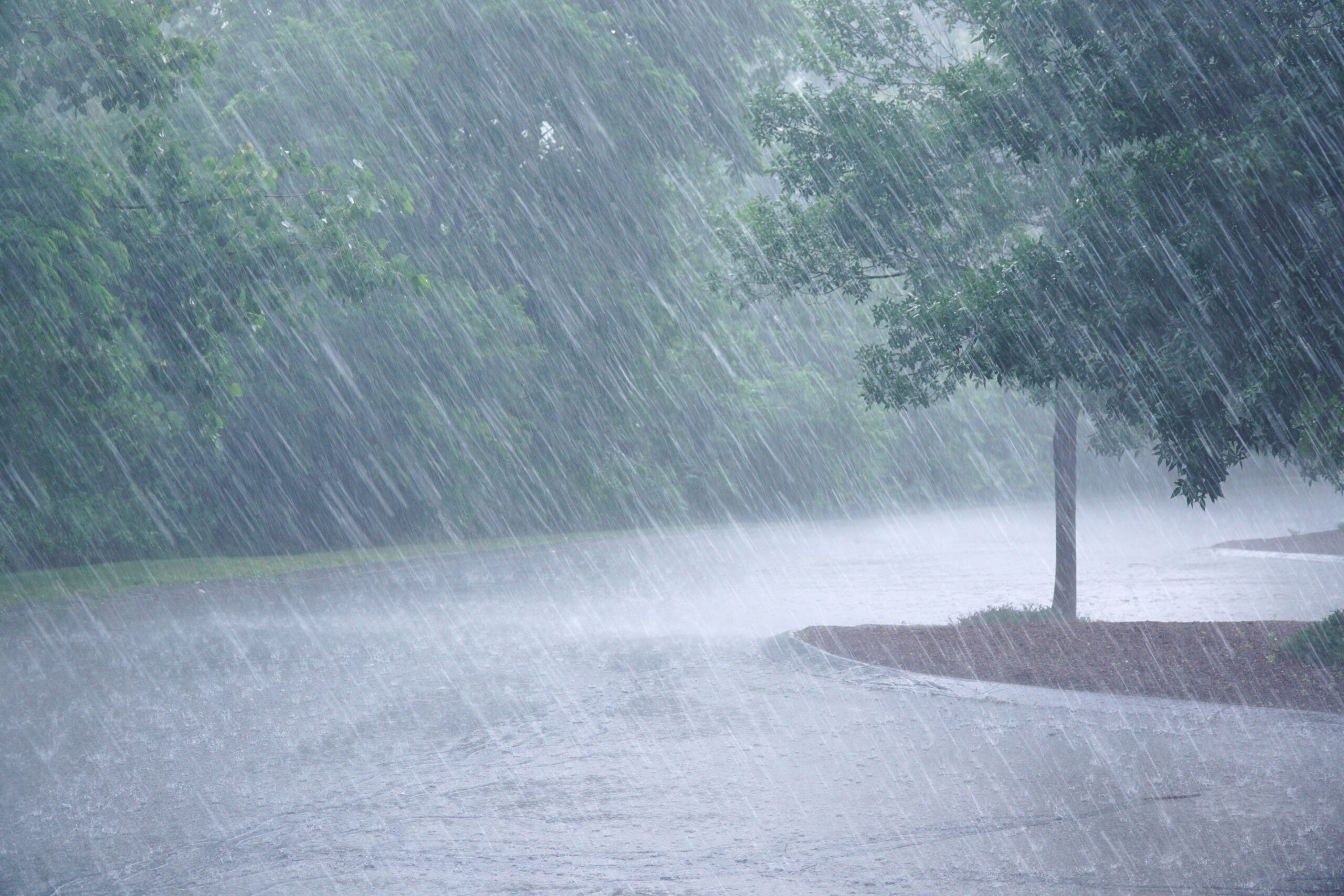
One of the best ways to prevent issues with your commercial parking lot is by investing in preventative asphalt maintenance. When you take steps to prevent issues, rain won’t cause as many issues.
Unfortunately, if you wait to invest in maintenance or skip it completely, small cracks, potholes, and depressions can occur.
Why Does Rain Damage Asphalt Parking Lots?
Water will weaken the bond between the asphalt binder and aggregates in the parking lot. When the asphalt cracks, it is vulnerable to the elements – especially water. As time passes, the water can begin to erode unprotected asphalt and weaken the structural and supportive layers present.
Excess water in your parking lot isn’t unlikely in areas susceptible to drastic weather fluctuations. Unfortunately, standing water is susceptible to the freeze and thaw cycle, which will shrink and expand the water molecules. When this happens, stripping occurs, which is when the aggregate and binder debond. When this happens, the binder will deteriorate and weaken the pavement, which makes it more vulnerable to damage in the future.
If you don’t treat a small crack quickly, it will get bigger and cause even more damage. Over time, the entire parking lot will be covered with alligator cracks, which are unappealing and unsafe.
Solutions for Ensuring Asphalt Surfaces Aren’t Damaged by Rain
There are a few options to help ensure your asphalt parking lot isn’t damaged by rain. These include:
Sealcoating
It’s possible to protect asphalt surfaces from water penetration with sealcoating. This process adds a thin layer of liquid over the surface to protect it from damage caused by vehicle fluids, snow, rain, and UV rays. Adding sealcoating will prevent cracks from forming, to begin with, and extend the asphalt’s lifespan.
It’s smart to invest in sealcoating once every three to five years to protect the investment you make.
Drainage
Proper water drainage is essential when the asphalt is installed. When constructing a parking lot, the contractor must take advantage of any grassy areas and inlets where water is easily directed with curbing and slopes.
Porous pavement lets rain drain through the surface into the stone recharge bed. It’s then filtered into the soil below. This is an effective way to manage water drainage and may even result in tax cuts for your business.
Invest in Preventative Maintenance
Rain and standing water can cause weaknesses in an asphalt surface. Fixing small cracks is much easier to manage and repair than larger ones, so you must get them fixed right away.
Hiring professionals to help with this will pay off in the long run. Make sure you put time and effort into preventative maintenance to minimize issues and ensure your asphalt surface doesn’t cause liabilities for your business. Making sure that your parking lot remains in good condition may not seem like a big deal, but failure to do this will cost you a lot of money and frustration in the future.

